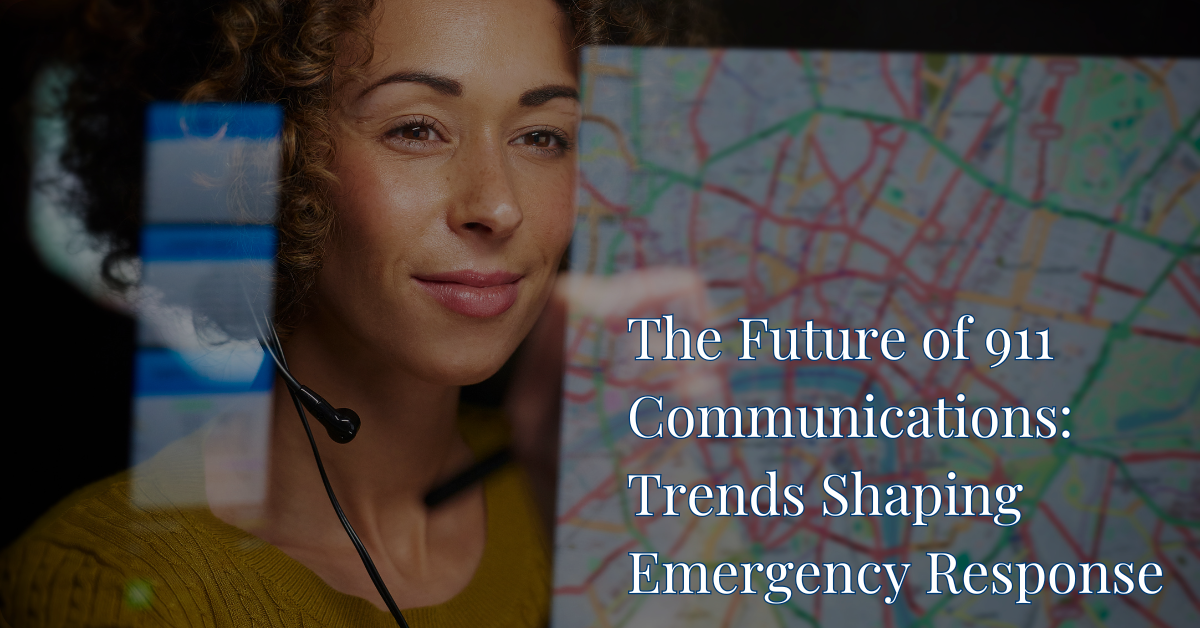The Future of 911 Communications
Trends Shaping Emergency Response
Ted Adams
12/25/20242 min read


In today’s fast-paced world, 911 communications centers serve as the critical link between emergencies and lifesaving responses. As technology evolves and challenges mount, the landscape of #emergencycommunications is undergoing a significant transformation. This post explores key trends shaping the future of 911 #dispatchcenters and invites you to share your thoughts and insights on the road ahead.
1. Next-Generation 911 (NG911)
What It Is: NG911 is a nationwide initiative designed to upgrade 911 systems to accommodate modern communication methods such as text messages, photos, videos, and real-time location data.
Why It Matters:
Enhances the ability to receive and process multimedia information during emergencies.
Improves location accuracy for mobile callers, enabling faster and more precise responses.
Facilitates seamless communication between agencies, improving coordination during large-scale incidents.
Question for You: How do you see NG911 impacting day-to-day operations in dispatch centers?
2. Artificial Intelligence (AI) and Automation
What It Is: AI tools and automated systems assist #dispatchers by analyzing incoming data, prioritizing calls, and even providing suggestions for resource allocation.
Why It Matters:
Reduces response times by streamlining decision-making.
Helps filter non-emergency calls to ease dispatcher workloads.
Offers predictive analytics to anticipate high-call periods and resource needs.
Question for You: What role should AI play in emergency response systems without compromising human judgment?
3. Mental Health and Wellness Programs
What It Is: Increasing awareness of dispatcher burnout and PTSD has led to new programs focusing on #mentalhealth support and resilience training.
Why It Matters:
Provides critical support to dispatchers handling high-stress situations.
Reduces turnover and absenteeism, improving staffing stability.
Encourages peer support networks to create stronger teams.
Question for You: What strategies have you seen work best for supporting dispatcher mental health?
4. Community Engagement and Public Education
What It Is: Dispatch centers are emphasizing outreach programs to educate the public on when and how to call 911, reducing misuse and enhancing efficiency.
Why It Matters:
Improves caller preparedness, leading to better information and faster response times.
Builds stronger connections between dispatch centers and the communities they serve.
Question for You: How can public education campaigns better prepare callers to assist dispatchers during emergencies?
5. The Role of SaaS Solutions in Modern Dispatch Centers
What It Is: Software-as-a-Service (SaaS) platforms are streamlining operations by offering cloud-based solutions for call management, data storage, and reporting.
Why It Matters:
Enhances scalability and accessibility, particularly for smaller agencies.
Improves data security and disaster recovery capabilities.
Provides real-time analytics to support decision-making.
Question for You: What features should CAD systems and #SaaS providers prioritize to better support dispatchers?
Final Thoughts
As 911 communications continue to evolve, the integration of new technologies and strategies will play a pivotal role in improving efficiency, resilience, and outcomes. I’d love to hear your perspective—what trends do you believe will define the next decade of emergency response?
Let’s Connect: Share your thoughts in the comments, or feel free to reach out directly to continue the conversation!
#911 #911Dispatch #911Dispatcher
